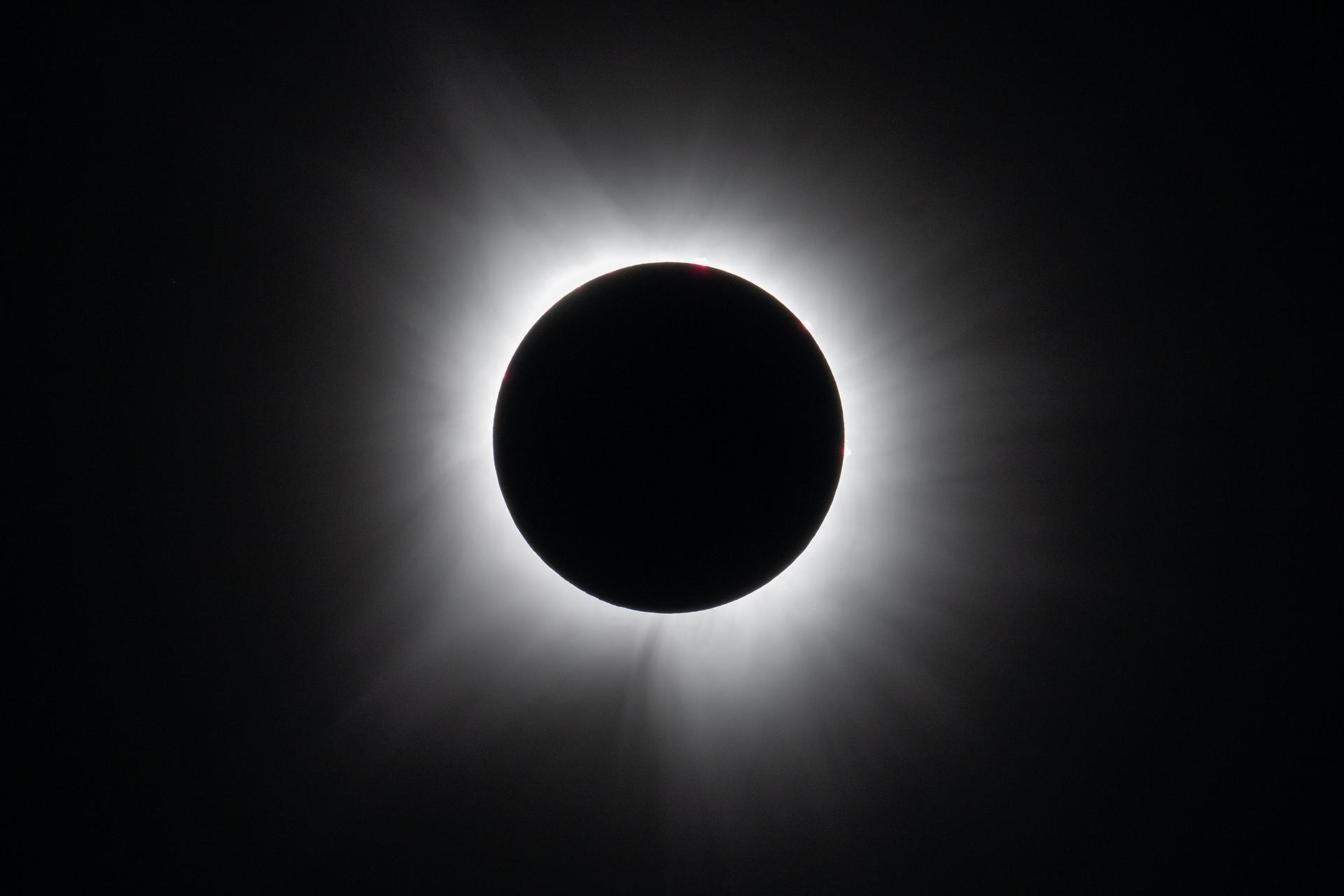4 min read
“The greatest scientists are artists as well.” ~Albert Einstein
Art and science have been treated as separate disciplines but have more in common than is often realized. Creativity is critical to making scientific breakthroughs, and art is often an expression (or product) of scientific knowledge. And both art and science begin in the experience of awe, of beholding something grand. The experience of a solar eclipse is a prime example of where these two human endeavors meet.
Eclipses are celestial events we can predict with extreme precision, and their occurrence reveals fundamental truths about our place in the universe. Yet, as many eclipse watchers will attest, there is no anticipating how you will feel when experiencing one. The emotional resonance of eclipses is underlined by their presence in artforms in cultures across the world going back millennia.
To celebrate the special role of eclipses in connecting art and science, creatives across NASA will be sharing their eclipse-inspired artwork in anticipation of two solar eclipses that will cross the United States on October 14, 2023, and April 8, 2024.
The first two pieces in the series are presented below, with short biographies of their creators.

Tyler Nordgren is a professional astronomer and artist. He holds a Ph.D. in Astronomy from Cornell University where he investigated dark matter. For two decades he was a professional astronomer at the U.S. Naval Observatory, Lowell Observatory, and the University of Redlands. Since 2007 he has worked with the National Park Service to promote dark skies education and outreach, writing the book “Stars Above, Earth Below: A guide to astronomy in the national parks.” As an artist, his vintage- style “Half the park is after dark” posters are on sale in state and national parks across the country.
"I spent a lot of years driving around the American Southwest, visiting many of the state and national parks that will be in the path of this upcoming eclipse. This view captures the feeling of a number of those places I loved so much. I chose the color palette and typestyle to reflect that midcentury moment when so many families were first hitting the road in the 1950s, visiting these places for the first time themselves. To me, the eclipse above and landscape below represent a spectacular world waiting to be discovered anew."

Kristen Perrin is a successful African American woman, mother of four, and Senior Multimedia and Graphic Specialist. She graduated from Villa Julie College (now known as Steven University) with a Bachelor of Science degree in Visual Communication, with coursework and certificates from the Johns Hopkins Computer Institute for web development. Kristen has designed digital and physical products with several Fortune 500 companies, the United States Department of Defense, and the National Aeronautics and Space Administration.
“I felt as though the 2023 annular eclipse should be familiar, inspiring, and welcoming to all demographics, depicting the spectacular dynamics of the event being enjoyed by all. The three circles with multiple rings around them add a solar and planetary figurative dimension to the piece. The circles evoke the Moon, Sun, and planets in our solar system, while the rings in turn represent orbital paths as well as the ’ring’ created during the annular eclipse.
Oftentimes there is not enough cultural representation when solar or celestial events take place. Monumental events such as these are not discussed outright in urban communities — but that does not devalue the occurrence. I felt it was important to choose persons that represent a more modern and diverse audience to provide visual inclusion within the design of the poster. This event impacts the world in which we live in and should be shared and enjoyed by all.”
To download these posters, follow the links below:







